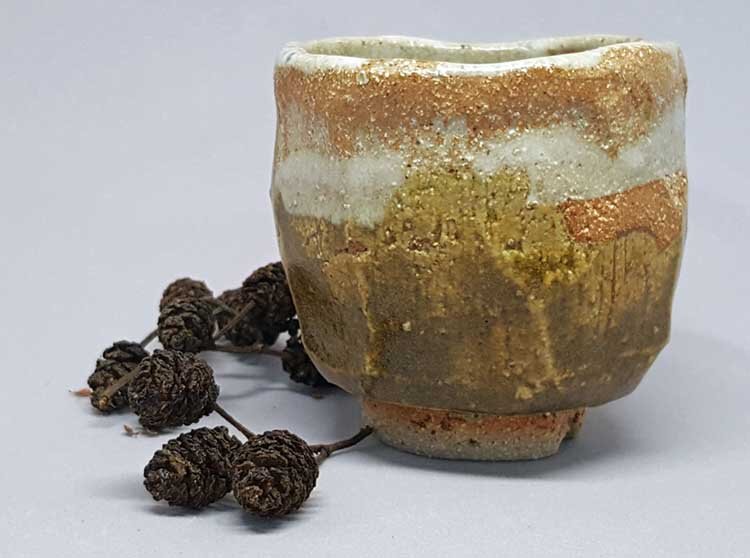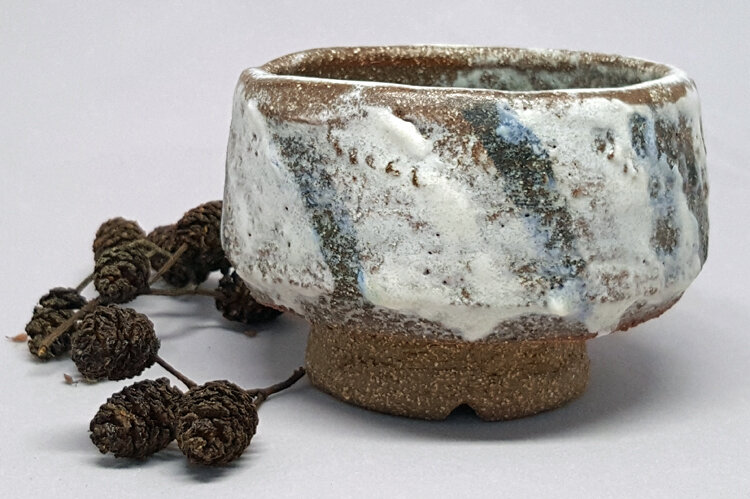kurinuki - a traditional japanese technique
simplicity and complexity
I just LOVE Kurinuki.
It is such an accessible way to experience clay. It’s a satisfying introduction to anyone new to the material, as well as a real challenge to the experienced ceramicist. Kurinuki is an easy technique to learn but, like many traditional art forms, it takes years to master and perfect.
That does not mean that the beginner can’t produce satisfying and beautiful objects. It is quite beyond me why people are introduced to clay with pinching, coiling and slab building. These are actually quite tricky methods to master, they require a certain level of skill and familiarity with clay to be successful, and it can be dispiriting to spend hours on a coil or slab pot only to have it crack and fall apart in the kiln, or end up a heavy lump far from the maker’s intentions. It is certainly true that you can only acquire the necessary skills by practising these techniques - and pinching in particular is an excellent way ‘to get to know’ the feel of different clays - but the difficulty of achieving happy initial results are enough to put off a novice for life.
So much better to start with a method which can give you a result you can be proud of and THEN move on to the others.
what is kurinuki?
So what is it? Kuri Nuki is a traditional Japanese form of handbuilding. The word means ‘carving out’ and it involves shaping a solid block of clay, then carving out a vessel to create 'interior space’. It is a more sculptural approach to making and the interior of the piece is just as important as the exterior. With Kurinuki you can create anything from a tea bowl to a tea-pot, and it could be used as the starting point for a an assembled piece of work (although this is not the traditional approach).
The idea behind Kurinuki is that it should be spontaneous and ‘alive’, that the work should show the marks of the maker, that these marks should be deliberate and are of value in their own right. The finish is not supposed to be refined and smooth - the more raw and sculptural the better to demonstrate the process of making. This does not mean that work has to be heavy and lumpen, and once one has mastered the basic technique the challenge is to refine your practice while retaining its essential character.
in the fire
Kuri Nuki simply describes the method of making. The way the piece is glazed or finished is a separate choice, and any number of options are open to the potter.
The little dish in the image above has white porcelain slip and cobalt oxide applied to the raw pot, with a thin translucent glaze after biscuit firing. The small cup in the top image is decorated with a combination of two glazes - a yellow iron oxide and a white satin opaque. Traditionally, simple glazes are favoured and these can be used in combination and with oxide washes to give interesting textural results, but there are no immutable rules.
If the right sort of clay is used you can pit fire the ware at home without a kiln (taking appropriate health and safety precautions), raku glaze and fire or use a conventional electric, gas or wood-fired kiln. This is a technique which opens up a world of possibilities for the potter and one for everyone to try.



